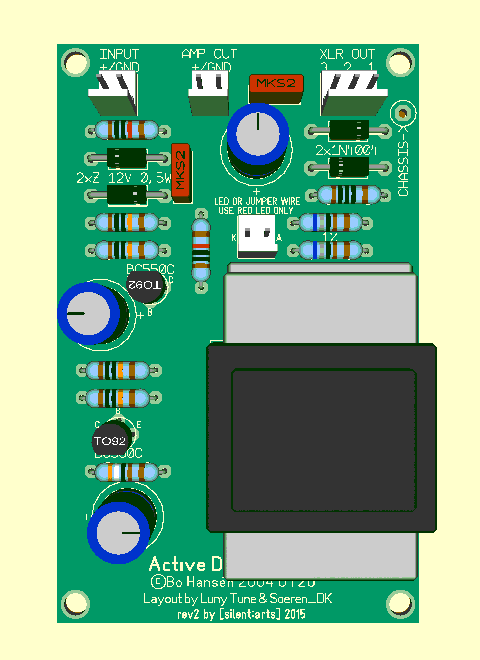[silent:arts]
Well-known member
Is CDIL a known brand, or no name? Their BC550 / BC560 work just fine in my V672X.
Bo Hansen said:Thank you Ryan, very nice to hear that you like my DI-box design, and that you managed to get the bass sound when you do long distance tracking.
Btw, you mention the Moody Blues.
In 1973, AUDEX from Gothenburg Sweden, an amplifier factory I was part of, delivered two modified Audex TR100 amplifiers to Mike Pander, which he used for his Mellotron under his Europe tour during this time.
--Bo

Soeren_DK said:

Bo Hansen's DI page:
http://www.hansenaudio.se/techpage.htm#active%20DI-box,%20my%20work%20horse%20from%201975
and the schematic is here: http://www.hansenaudio.se/Active%20DI%20box%201975.jpg
Boards available here:
From June 2015, Volker is the new supplier of PCBs.
https://groupdiy.com/index.php?topic=39570.msg488632#msg488632
Shopping list:
US: http://www.mouser.com/ProjectManager/ProjectDetail.aspx?AccessID=12eddc2712
http://benlindell.com/diy/Bo-Hansen-DI-BOM.pdf (made by benlindell)
EU: http://www.mentol.dk/diy/bohansen/BOM - Diyfanatic - bo DI.xlsx (made by diyfanatic)
Help:
TRANSISTOR CHOICE
HAUFE TRAFO BUY
MAKING PAD MOD
Self-etching papers:
http://www.mentol.dk/diy/bohansen/bohansen.pdf
http://www.mentol.dk/diy/bohansen/silkscreen.pdf
Cheers
Soren
Bill2000 said:Hi I am looking for either the gerber files or a place where I can purchase the PCBs from.
thewotan said:I did find a short between pin 2 and 3 of the XLR out. At first, I thought that it may be a solder bridge, but I resoldered it with extra care to make sure there was no solder bridge. But it is still shorted. Is this normal? For what I understand in the schematic, it is, but it seems counterintuitive to me...
Ricardus said:How about uploading some hi-res pics of the component side of the board and the solder side of the board?
Enter your email address to join: